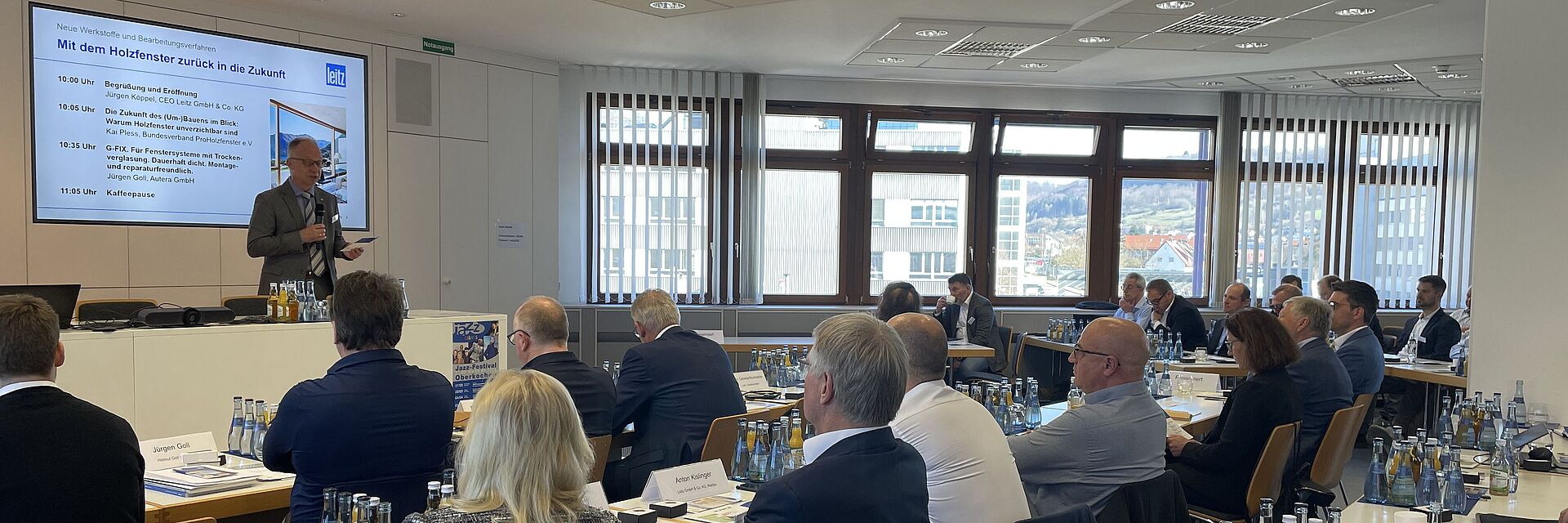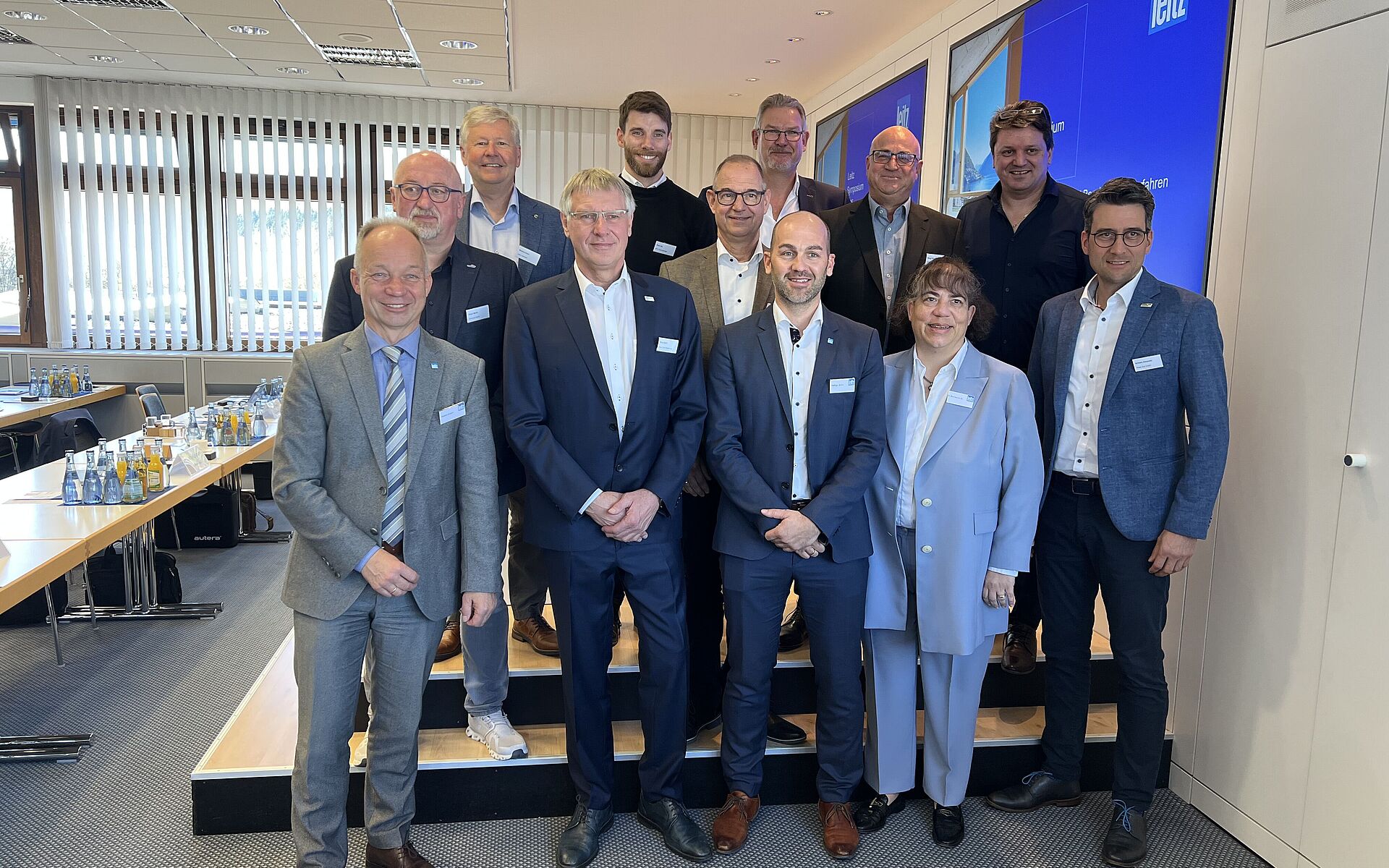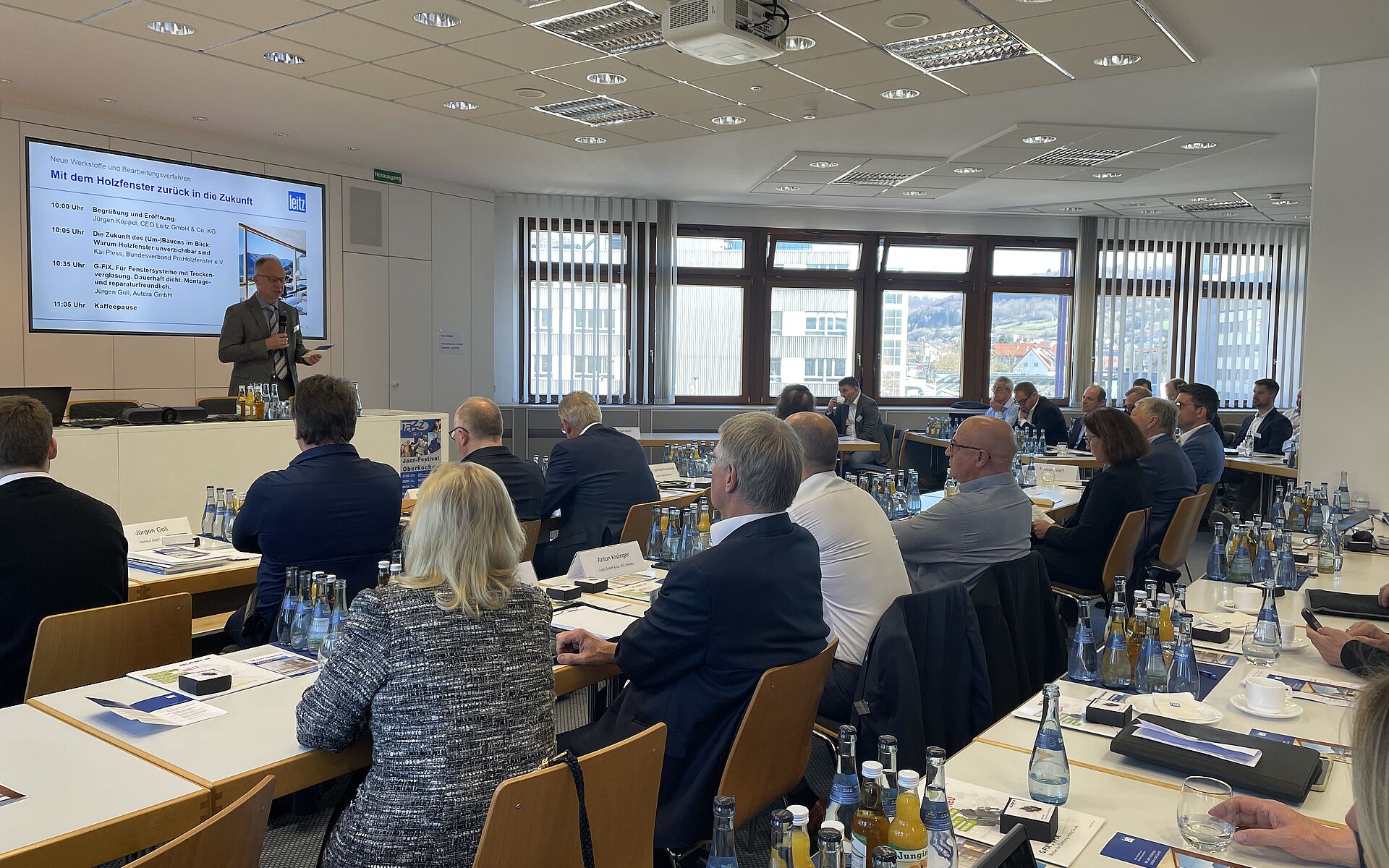After the opening speech by Jürgen Köppel, CEO of the Leitz Group, Kai Pless, Managing Director of the German ProHolzfenster association, introduced the symposium with a forward-looking presentation. In it, he explained the importance of wooden windows in the context of a sustainable building revolution and emphasised the potential of this material - particularly in terms of CO₂ balance, material quality and design options. Pless also addressed the current political situation and emphasised both the challenges and opportunities in the context of climate protection, resource efficiency and a new culture of conversion. With regard to rising CO₂ prices in the future, he emphasised three key aspects for the future of wooden windows: carbon sequestration, long lifetime and recyclability. He also outlined goals that the industry still needs to pursue in order to further strengthen the natural advantages of wood as a material.
In his lecture, Jürgen Goll, Managing Director of autera GmbH, presented technical solutions for the installation-friendly and resource-saving design of window constructions. The focus was on the innovative G-FIX fixing system, which was specially developed for dry glazing. It enables permanent tightness as well as simplified installation and reuse of the glazing beads when replacing the glass.
Together with the complementary T-FIX system for element construction, G-FIX ensures reliable mechanical fixing of the glass pane. Goll emphasised that the systems not only save time, but also make it easier to separate materials by type at the end of the product's life - a significant contribution to sustainability and the circular economy.
Under the title ‘The future is today’, Martin Wiesmann and Martin Stöger from Remmers GmbH showed how biocide-free impregnation and digitalisation are advancing window construction. The focus was on an environmentally friendly impregnation that protects the wood sustainably and contributes significantly to recyclability. Martin Stöger presented his concept of the digital product passport, which is designed as an open industry solution, as an essential prerequisite for the material cycle of disused wooden windows. A QR code is inserted into the glass pane to identify the window and all product features created during the production process can then be stored under this code in the cloud, so that even years later it is still possible to trace what was processed and how.
A central aspect of the future viability of wooden windows is modern and efficient production - the next lecture block was dedicated to this topic. In his presentation, Alexander Schwarz, Technical Manager at Kneer Südfenster, outlined the company's technological development and illustrated how Kneer is actively shaping change in design and production. He emphasised the importance of forward-looking investments and innovative production methods in order to meet the requirements of a changing market. He particularly emphasised the need to adapt production technology and processes to the increasing individualisation of products. A key example was the conversion from classic throughput production to flexible single-part production with CNC machines - a solution with which Kneer successfully mastered the challenge of ‘quantity despite variety and batch size 1’.
The subsequent presentation was also dedicated to the sustainable production of windows - this time focussing on the challenges and opportunities in medium-sized trade businesses. Under the title ‘From Sachl to modern CNC technology’, Anton Manhart, Managing Director of the family-owned company, showed how continuous modernisation - starting with the introduction of the first CNC machine in 2007 and the further flexibilisation of his production to date - has led to competitive production. His conclusion: sustainability does not depend on the size of the company, but on the willingness to change.
In his presentation, Michael Mosner from Homag GmbH focussed on the challenges and solutions in CNC window production. He showed how Homag has been successfully using CNC technology since 1989 and today offers flexible and economical entry-level options, especially for small companies. The focus was on aspects such as variant diversity, special designs, quality and repeat accuracy. Mosner paid particular attention to the ‘Windows and Doors for Craftsmen’ (KFTH) initiative - a co-operation group of eight premium partners and suppliers. The aim of this platform is to provide window manufacturers with practical knowledge and tried-and-tested solutions for the transition from conventional angular systems to CNC productionA central offering is a window package that has already been tried and tested and is ready for production, enabling a cost-efficient introduction to CNC technology.
In his presentation, Anton Kislinger, Industry Manager at Leitz, showed how high-performance tools support cost-effective window production. The focus was on the innovative ProfilCut Q tool system, which impresses with its high cutting quality, productivity, efficiency and sustainability. With its PREMIUM expansion stages for high cutting speeds and shorter machining times, the resharpenable and diameter-constant PLUS version and a DIAMOND version for hardwoods, this tool system offers the right solution for a wide range of requirements. Complementary technologies such as RipTec, hybrid cutting materials and shrink joints for maximum precision and long tool life make ProfilCut Q a key component of resource-saving and future-orientated window production.
The Leitz Symposium concluded with a presentation by Detlef Timm, Managing Director of Hans Timm Fensterbau GmbH & Co. KG, under the title ‘Welcome to today’. Timm clearly demonstrated how classic box-type windows can be refurbished to conserve resources and returned to the material cycle without losing their architectural charm. Using the example of Berlin, he illustrated how the holistic and scientifically based refurbishment of wooden windows has been successfully implemented since 1999. Modernised box-type windows often achieve better values than new windows in terms of tightness, thermal insulation and sound insulation. Using the example of Berlin, he illustrated how the holistic and scientifically based refurbishment of wooden windows has been successfully implemented since 1999. Modernised box-type windows often achieve better values than new windows in terms of tightness, thermal insulation and sound insulation.
‘The contributions at the symposium emphasised the great potential of timber windows in terms of design variety, CO₂ bonding and durability. The central task of the industry is now to anchor this awareness among architects and building owners, emphasised Andreas Kisselbach, moderator of the symposium and R&D manager at Leitz, in his closing remarks. The strong response and the consistently positive feedback are proof of this: The topic is moving the industry.


